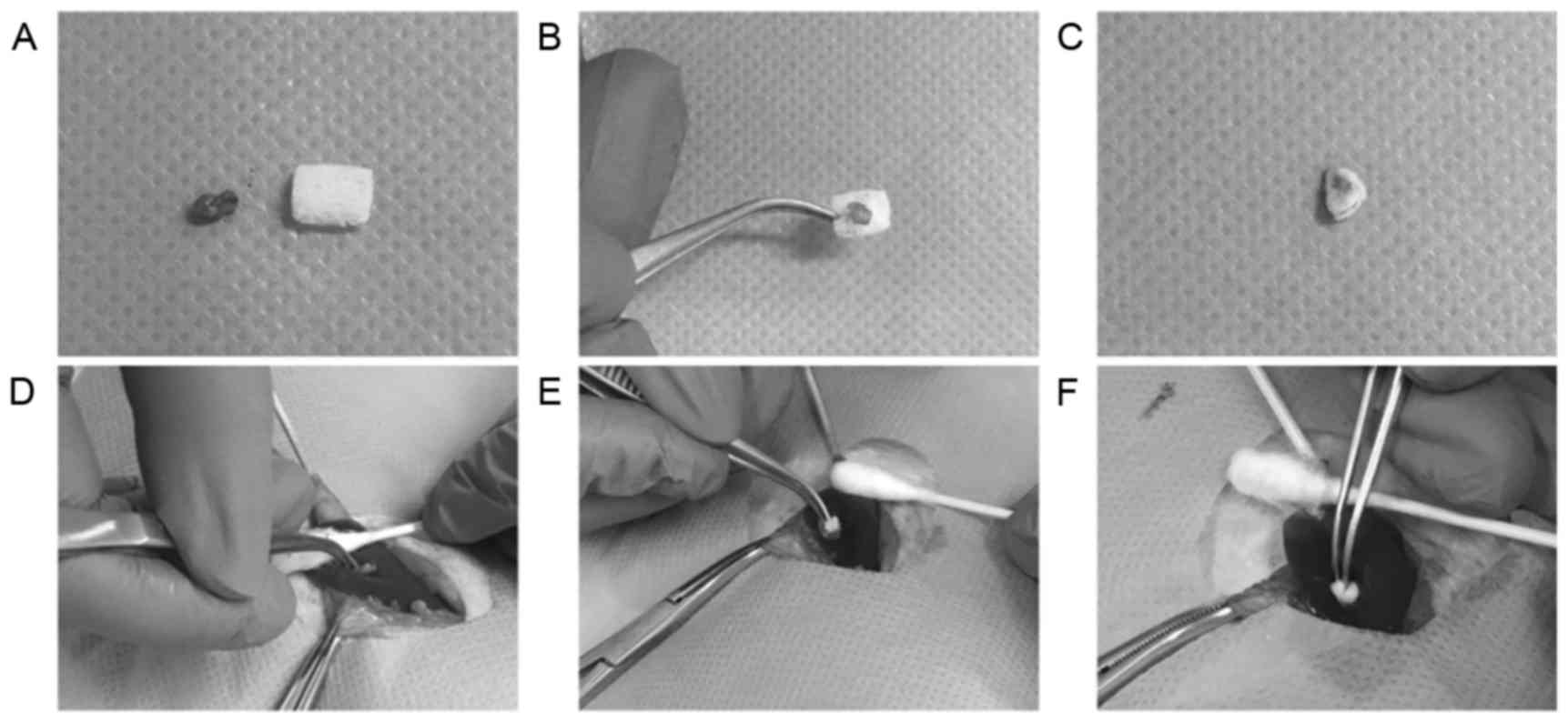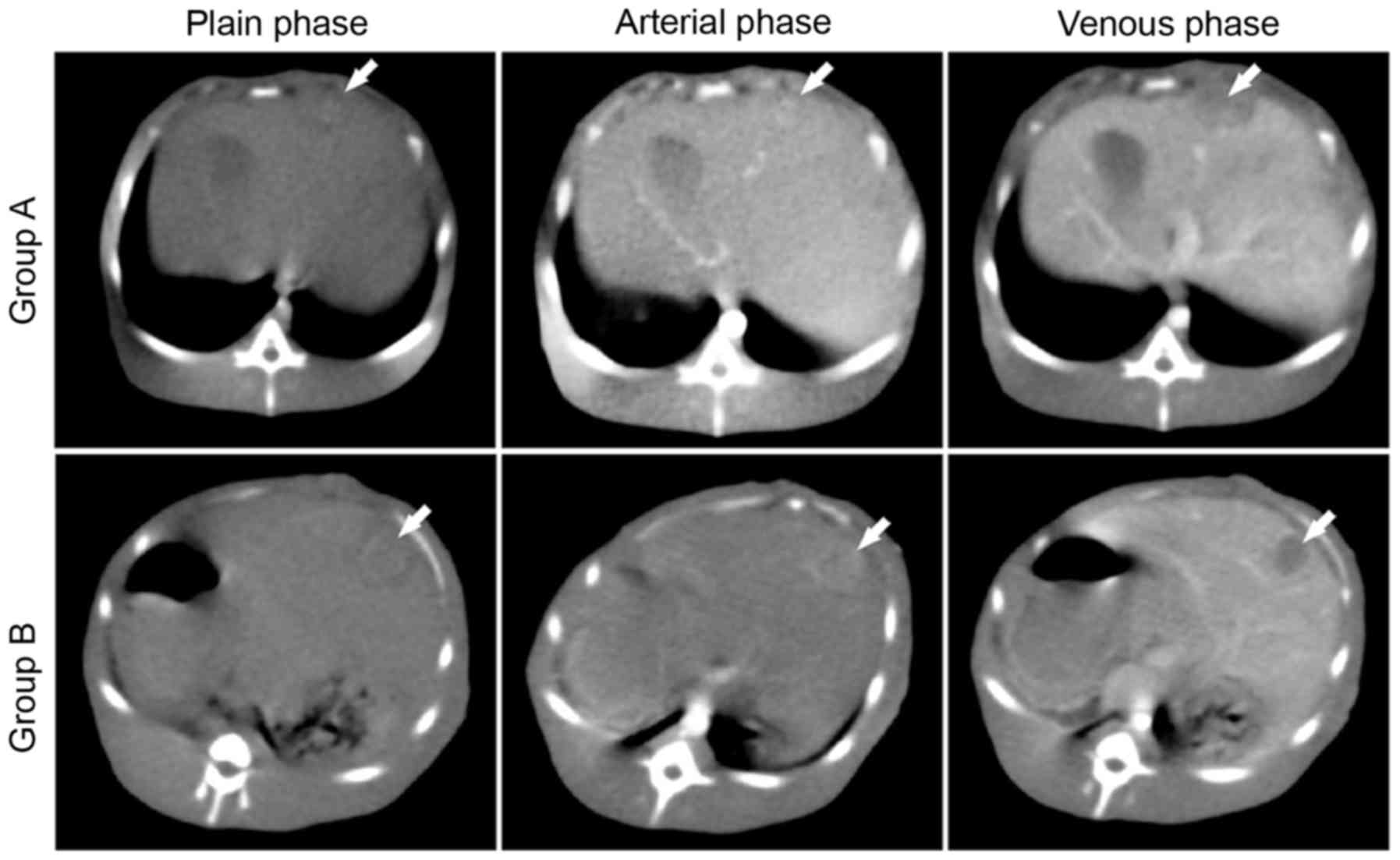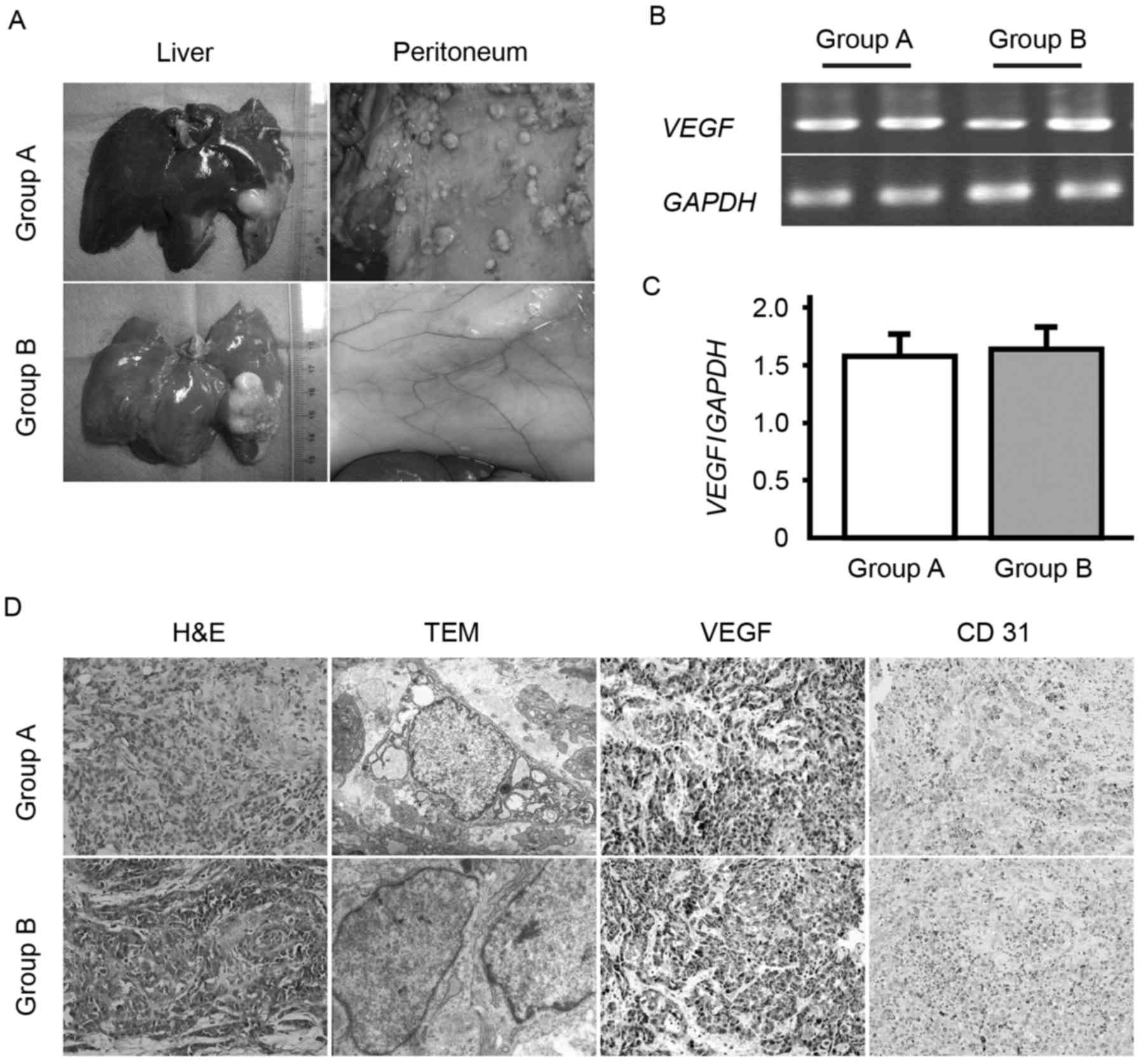Modification of the method to establish a hepatic VX2 carcinoma model in rabbits
- Authors:
- Published online on: February 7, 2018 https://doi.org/10.3892/ol.2018.7980
- Pages: 5333-5338
Metrics: Total
Views: 0 (Spandidos Publications: | PMC Statistics: )
Total PDF Downloads: 0 (Spandidos Publications: | PMC Statistics: )
Abstract
The hepatic VX2 carcinoma model in rabbits is widely used for the preclinical study of hepatocellular carcinoma. In the present study, a modification was made to the conventional method to establish the animal model, as the conventional method gives rise to frequent tumor seeding due to the drop‑out of tumor fragments. In order to evaluate each distinct method of establishing the model, the rabbits were divided into two groups: Group A (the conventional method; n=20) and group B (the modified method; n=20). All surgical details were recorded for reference. At 14 days post‑surgery, contrast‑enhanced computed tomography (CECT) and autopsy were conducted. Microscopic morphology of tumor cells was observed using hematoxylin and eosin (H&E) and transmission electron microscopy (TEM). Vascular endothelial growth factor (VEGF) and cluster of differentiation (CD)31 were detected via immunochemistry and reverse transcription-polymerase chain reaction. In total, 19 rabbits in each group succeeded in model establishment. Throughout the surgery, group A experienced a longer surgery time compared with group B (group A vs. group B, 22.57±1.34 vs. 20.17±1.50 min; P<0.001), an increased tumor fragment drop‑out frequency (group A vs. group B, 1.84±0.96 vs. 1.16±0.38; P=0.008) and an increased peritoneal nodule incidence (group A vs. group B, 35 vs. 5%, P=0.042). As for CECT, H&E and TEM, hepatic VX2 allografts in the two groups demonstrated similar imaging presentations and tumor cell morphology. In addition, VEGF and CD31 levels did not differ between the two groups. In conclusion, the modified method for the establishment of hepatic VX2 carcinoma model in rabbits may decrease tumor fragment drop‑out frequency during surgery and incidence of tumor seeding without affecting the properties of VX2 carcinoma.












